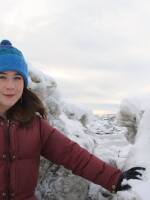Fishing opens for Bristol Bay red king crab, Bering Sea snow crab and Bering Sea tanner crab on Oct. 15. The snow crab population is on the rise, while red king crab and tanner crab are declining.
Bering Sea crab fishing is just around the corner. Fishermen can put down their pots for Bristol Bay red king crab, Bering Sea tanner crab and Bering Sea snow crab on Oct. 15.
The quota for red king crab is down significantly. At 4.3 million pounds, the total allowable catch is 35 percent lower than last year’s, which was already the lowest TAC since 1996. Biologists expected the spring survey to show a decline in red king crab, but the drop was even greater than anticipated.
“It's hard to determine exactly what the trigger or what the combination of triggers is for the declines in this stock,” said Miranda Westphal, Alaska Department of Fish and Game area management biologist. “We believe it's probably a combination of environmental factors along with maybe something has changed. There's bycatch issues. It's hard to tell exactly what the threshold is because we can't go out and see them and count them and look at their environment since they're at the bottom of Bristol Bay.”
While it is hard for scientists to design studies that pinpoint specific causes of crab population decline, they can point to unusual features of the Bering Sea right now that could be stressors — warm water for example.
“Right now we know that the Bering Sea's been very warm for a couple years. This year it's going to be another warm year. The environmental scientists that study Bering Sea temperatures, they're letting us know that there's not a cold pool this year,” Westphal explained. “Generally there's a cold pool that comes down through the Bering Sea and helps to structure the different populations we have of crab and ground fish. That's not there this year. It's possible the crabs have moved or they can't adapt to environmental stressors. It's just it's hard to say.”
The Bering Sea tanner crab is another population that’s struggling. Three years ago, the fishery did open due to low population. Last year, the fishery’s west side opened, while the east side remained closed. The same will happen this year with a similar TAC — 2.4 million pounds for the west side only.
“We're seeing a lot of older crab. Not a lot of new shell biomass in the system right now. But there is a pulse of really small juveniles that will be coming into the fishery in about five years. So we've got some hope coming,” Westphal said.
The bright spot is the Bering Sea Snow Crab. Their quota of 27.5 million pounds is way up from last year’s 18.9 million.
“We've got a large recruitment pulse that's just started to come into the fishery, and we're starting to pick up some up of that,” said Westphal. “We're expecting really good news for the next few years.”
All three Bering Sea crab fisheries open October 15. Bristol Bay red king crab will remain open until January 15. Bering Sea Snow Crab runs through May. Bering Sea Tanner crab goes until the end of March.
Contact the author at avery@kdlg.org or 907-842-5281.



